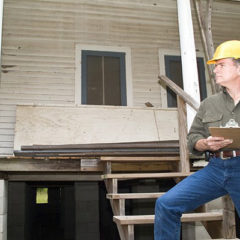How to Get Rid of Mold From Every Home Surface

Mold spores are all over around us in every kind of environment. Mold is fungi and some types are very helpful to humanity (think about penicillin), while others can be quite hazardous to crops, breathing systems, and the integrity of structures. Dangerous Mold vs. Mildew The most typical type of mold found in houses is mildew.
Mildew is a surface mold that grows in warm, wet locations like your restroom and on materials and books saved in wet basements. Mildew starts as a gray or white powdery colony. It will turn black or brown if not removed quickly and often looks like soil build-up. To check if the surface is covered with mildew or just dirt, dab the stain with a cotton bud dipped in household chlorine bleach. If the stain lightens or vanishes after two or 3 minutes, it's mildew. If not, it's most likely just dirt. If you spot a musty odor throughout your house, then you have a high concentration of mold. It can be originating from a hinder filled with wet towels, from a damp crawlspace under your home, or carpets that have mold growing in the padding. It's definitely time to act to get rid of the problem. Now you know that all mildew is mold however not all molds are mildew.
Mildew can discolor and gradually damage surfaces but there are a lot more dangerous molds that can damage the structure of your home. If you see a black or green mold that is fuzzy or slimy and the drywall or wood below is soft or falls apart, there is irreversible rot and the mold and the damaged surfaces must be removed instantly.
Employing Experts If mildew invasion is caught early, you can quickly handle it with home cleaners.
Caution For extensive mold issues, consider working with a professional. Some molds are extremely poisonous and even less unsafe molds can cause problems for anybody with mold allergies or jeopardized respiratory systems. The general rule is if the mold covers 10 or more square feet, call in a professional. Getting rid of large mold nests needs exposure to durable chemicals and proper disposal of infested building products.
Regional public health departments can use guidance on mold screening and refer you to a professional mold remover.
Products That Kill Mold Chlorine bleach: Sodium hypochlorite or regular household bleach works best to ruin mold and eliminate any staining. It is rather harsh and need to be watered down before using.
Caution Caution must be used due to toxicity and hazardous fumes and bleach needs to never be integrated with ammonia.
Hydrogen peroxide: Less harsh than chlorine bleach, hydrogen peroxide (3 to 10 percent service) will kill mold and lighten discolorations. While it does have a whitening result, it works more slowly than chlorine bleach but has no poisonous fumes or residue.
Distilled white vinegar: Vinegar is acidic and gradually breaks down the structure of mold and kills it. Vinegar is non-toxic however mold spots might stay and additional scrubbing with a family cleaner may be needed.
Baking soda and borax: Salt bicarbonate (baking soda) and borax each have a high pH that inhibits the development and survival of mold. Both items are low-cost, non-toxic, and easy to combine with water. Borax will work much better in eliminating any sticking around discolorations but not as efficiently as a stronger cleaning item. When utilizing any of these items, do not rinse away the cleansing service entirely. Leaving a bit of the cleaner will help inhibit future mold growth.
Removal from Fabric If your home has been flooded and mold and germs have actually been delegated grow for numerous days, it may be impossible to restore material products. Nevertheless, if mildew has developed due to wetness and is caught early, it can quickly be removed from many fabrics. Begin by taking the products outside to brush away as much surface mold as possible and to avoid spreading the mold spores inside your home. If the material is washable, use the most popular water recommended on the care label http://www.thefreedictionary.com/Mold inspection and include a disinfectant. If discolorations stay, develop an option of oxygen bleach and water and allow the clothes to soak for at least 8 hours.
Oxygen bleach can be used safely on any washable fabric. For fabrics that are dry tidy just, brush away the mildew outdoors and after that head to a professional cleaner. Recognize and point out the discolorations and many materials can be effectively restored.
Leather Shoes, Coats, Accessories, and Furniture Mold on leather coats, shoes, mold inspection cost near me purses, and furnishings needs to be eliminated outside, if possible. Wipe down the surface with a fabric dipped in distilled white vinegar and then with a great leather soap and warm water. Dry with a soft cloth and permit to air dry entirely. Once entirely dry, deal with the product with a leather conditioner.
Books and Documents Mold will ultimately destroy paper however it can be effectively gotten rid of. For costly books and traditionally considerable documents, speak with a professional curator. Never try to deal with moist paper. The mold will smear and end up being almost difficult to get rid of. Enable the paper in books to air dry completely in the sun or location in a sealed container with moisture absorbent material like silica gel or cornstarch sprinkled between the pages. When the book is dry, head exterior and utilize a soft paintbrush or fabric to gently brush away the mildew from the cover and each page. Slide a sheet of waxed paper under each page to safeguard the page behind it. A little dampen a clean, soft fabric with hydrogen peroxide and carefully wipe down each page permitting it to air dry completely prior to relocating to the next page.